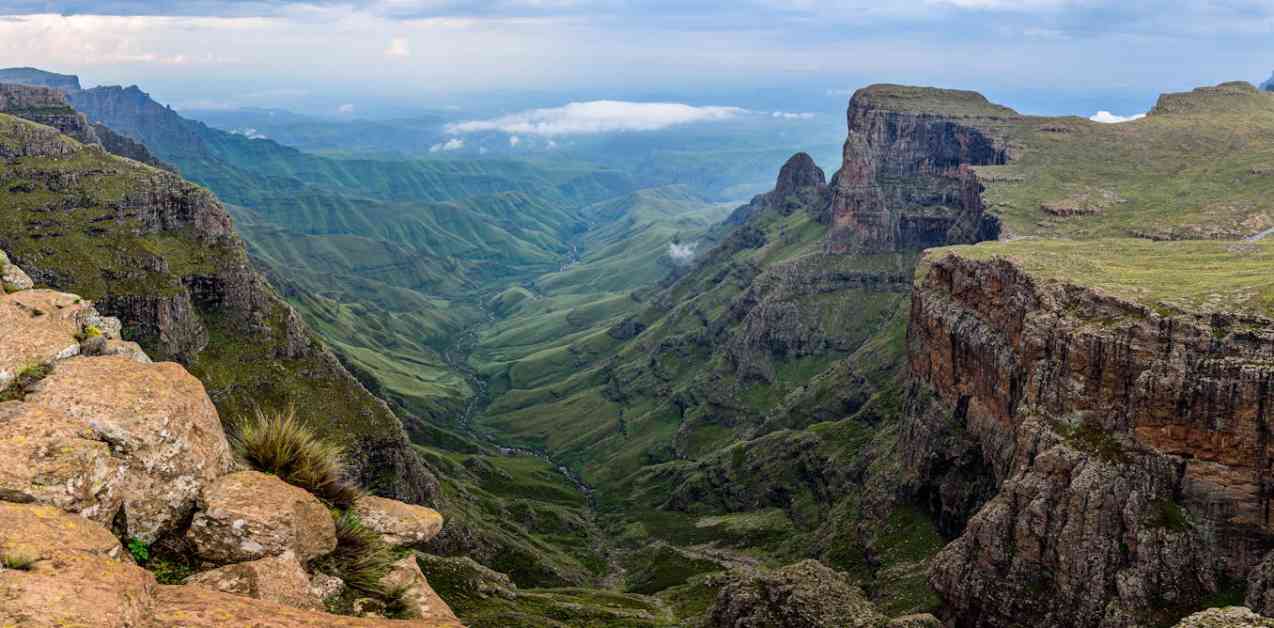Uncovering the Mysteries of Mountain Formation
Exploring the majestic Drakensberg Mountains in Lesotho, Southern Africa, one cannot help but marvel at the towering escarpments that dominate the landscape. These cliff-like features, rising up by a kilometre or more, raise an intriguing question: how did they come to be? The traditional understanding of mountain formation involves the movement of Earth’s tectonic plates at active boundaries, where volcanism and earthquakes are common. However, the presence of such dramatic features far from these boundaries has puzzled scientists for years.
Unraveling the Secrets of Earth’s Mantle Waves
After nearly two decades of research and analysis, a groundbreaking theory published in Nature sheds light on the formation of mountains in supposedly stable regions of continents. The theory proposes that when supercontinents like Gondwana began to break apart hundreds of millions of years ago, a phenomenon known as a “mantle wave” was triggered deep within the Earth’s mantle. This wave, akin to a slow ripple, stirs the partially molten underbelly of the landmass, disrupting its deep roots and causing significant uplift.
The mantle, a massive 2,900km-thick layer beneath Earth’s crust, plays a crucial role in this process. By simulating the properties of the Earth’s crust and mantle, researchers have observed how hot rock from the mantle rushes up to fill the void left by separating continents. As this hot rock interacts with the cold continent, it cools, becomes denser, and eventually sinks, resembling the movement of a lava lamp. What sets this theory apart is its explanation of how this motion not only affects the rift zone where the crust is pulled apart but also disturbs the nearby roots of continents, setting off a chain of instabilities driven by heat and density differences.
The Impact of Mantle Waves on Mountain Erosion
One of the most intriguing aspects of this theory is its implication for the surface features of continents. As mantle waves strip away layers of rock from the roots of continents, the landmass becomes more buoyant, causing it to rise and resulting in increased erosion by rivers. The uplifted terrain exposes previously buried rocks, steepening slopes, and creating deep valleys carved by rivers. Researchers predict that this erosion could amount to one or two kilometers or even more in some cases, fundamentally altering the landscape over millions of years.
The profound implications of mantle waves extend beyond geological processes. The intense erosion caused by these waves can lead to significant chemical weathering of rocks, removing carbon dioxide from the atmosphere and promoting global cooling. Additionally, the physical separation of flora and fauna due to uplifts can drive speciation and shape evolution over time. Thus, the study of mantle waves not only unveils the mysteries of mountain formation but also sheds light on broader environmental and evolutionary processes.
As researchers delve deeper into the impact of mantle waves on continental landscapes, they have uncovered evidence supporting their theory. By analyzing thermochronology data from Southern Africa, scientists have confirmed that several kilometers of erosion align with the times suggested by their models. Furthermore, the erosion pattern across the region closely mirrors the movement of the mantle wave in simulations, providing compelling evidence for the theory’s validity.
Connecting Mantle Waves to Plateau Formation
While the formation of escarpments like those in Lesotho has been linked to mantle waves, the origins of plateaus in regions like the Central Plateau of South Africa have remained enigmatic. Previous explanations involving mantle plumes have been proposed, but without conclusive evidence. However, the mantle wave theory offers a fresh perspective on plateau formation, suggesting that the uplift caused by mantle waves can lead to the creation of high elevation plateaus far from active tectonic plate boundaries.
To test this hypothesis, researchers employed landscape evolution modeling to simulate how the interaction of water with the landscape can result in the formation of plateaus. By incorporating the mantle wave into their models, they demonstrated how this phenomenon could theoretically give rise to high elevation plateaus. These findings provide a compelling explanation for vertical movements of continents outside of traditional tectonic boundaries, expanding our understanding of mountain formation processes.
In conclusion, the discovery of mantle waves and their role in shaping continental landscapes represents a significant advancement in the field of geology. By unraveling the mysteries of mountain formation in supposedly stable regions, researchers have not only explained the origins of dramatic features like escarpments and plateaus but also shed light on broader environmental and evolutionary processes. The study of mantle waves opens new avenues for exploring the dynamic interactions between Earth’s interior and surface, highlighting the interconnectedness of geological processes that have shaped our planet over millions of years.













